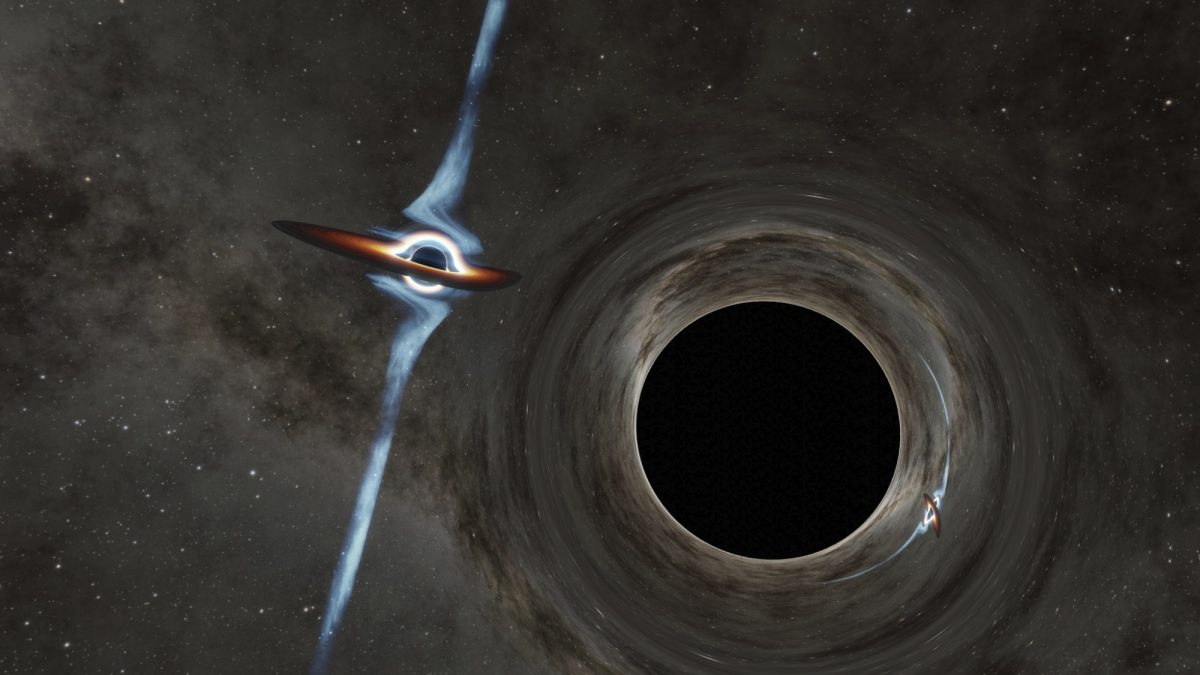
Credit: Caltech/R. Hurt (IPAC)
Colossal Black Holes Locked in Dance at Heart of Galaxy
Astronomers find evidence for the tightest-knit supermassive black hole duo observed to date
Astrophysicist, Dr. Christopher O’Dea, is part of an international discovery of a sinusoidal light curve spanning 45 years that points to the presence of orbiting supermassive black holes at the core of a distant galaxy.
Dr. Christopher O’Dea contributed the earliest observations of this system from the 70’s and 80’s which detected the first oscillation in the brightness of the quasar and established the beginning of the full 45 year timeline which was analyzed. This was based on work O’Dea started as a graduate student at University of Massachusetts with collaborators William Dent, Thomas Balonek, and Wayne Kinzel.
Locked in an epic cosmic waltz 9 billion light-years away, two supermassive black holes appear to be orbiting around each other every two years. The two massive bodies are each hundreds of millions of times the mass of our sun and separated by a distance of roughly fifty times that between our sun and Pluto. When the pair merge in roughly 10,000 years, the titanic collision is expected to shake space and time itself, sending gravitational waves across the universe.
A Caltech-led team of astronomers has discovered evidence for this scenario taking place within a fiercely energetic object known as a quasar. Quasars are active cores of galaxies in which a supermassive black hole is siphoning material from a disk encircling it. In some quasars, the supermassive black hole creates a jet that shoots out at near the speed of light. The quasar observed in the new study, PKS 2131-021, belongs to a subclass of quasars called blazars in which the jet is pointing towards the Earth. Astronomers already knew that quasars could possess two orbiting supermassive black holes, but finding direct evidence for this has proved difficult.
Reporting in The Astrophysical Journal Letters, the researchers argue that PKS 2131-021 is now the second known candidate for a pair of supermassive black holes caught in the act of merging. The first candidate pair, within a quasar called OJ 287, orbit each other at greater distances, circling every 9 years versus the two years it takes for the PKS 2131-021 pair to complete an orbit.
The tell-tale evidence came from radio observations of PKS 2131-021 that span 45 years. According to the study, a powerful jet emanating from one of the two black holes within PKS 2131-021 is shifting back and forth due to the pair’s orbital motion. This causes periodic changes in the quasar’s radio-light brightness. Five different observatories registered these oscillations, including Caltech’s Owens Valley Radio Observatory (OVRO), the University of Michigan Radio Astronomy Observatory (UMRAO), MIT’s Haystack Observatory, the National Radio Astronomy Observatory (NRAO), Metsähovi Radio Observatory in Finland, and NASA’s Wide-field Infrared Survey Explorer (WISE). The combination of the radio data yields a nearly perfect sinusoidal light curve unlike anything observed from quasars before.






